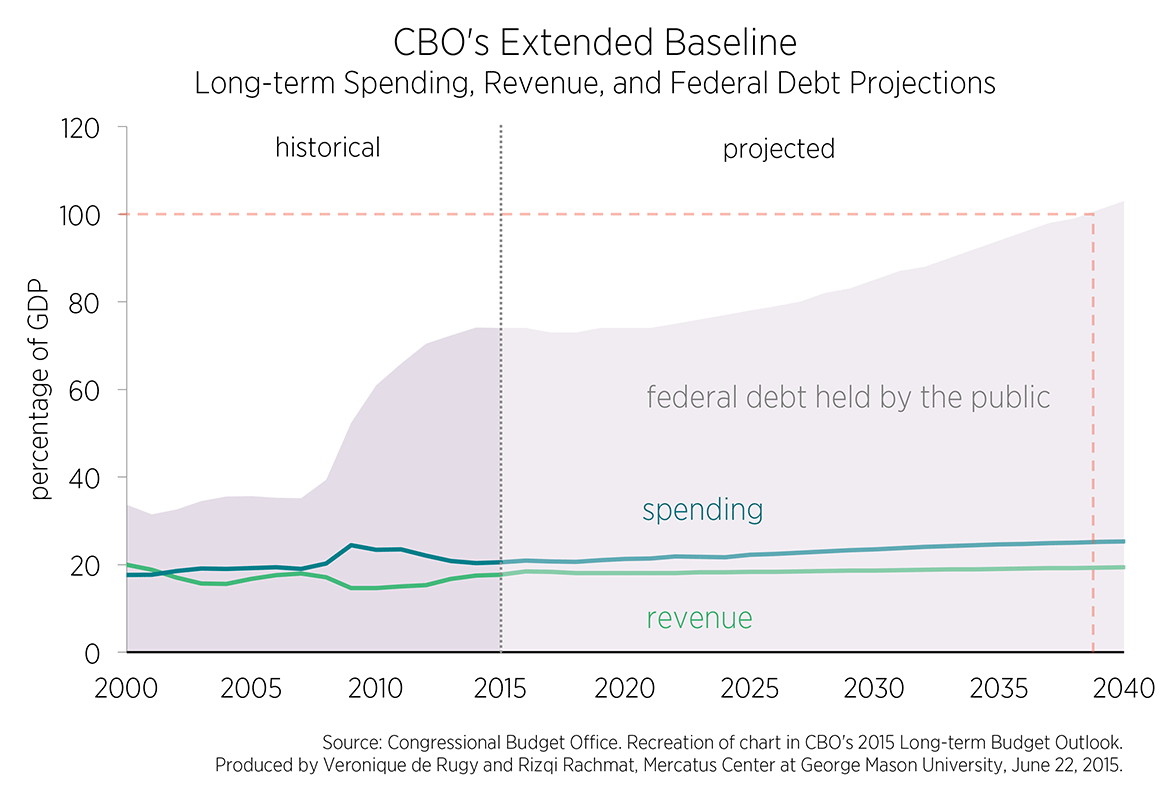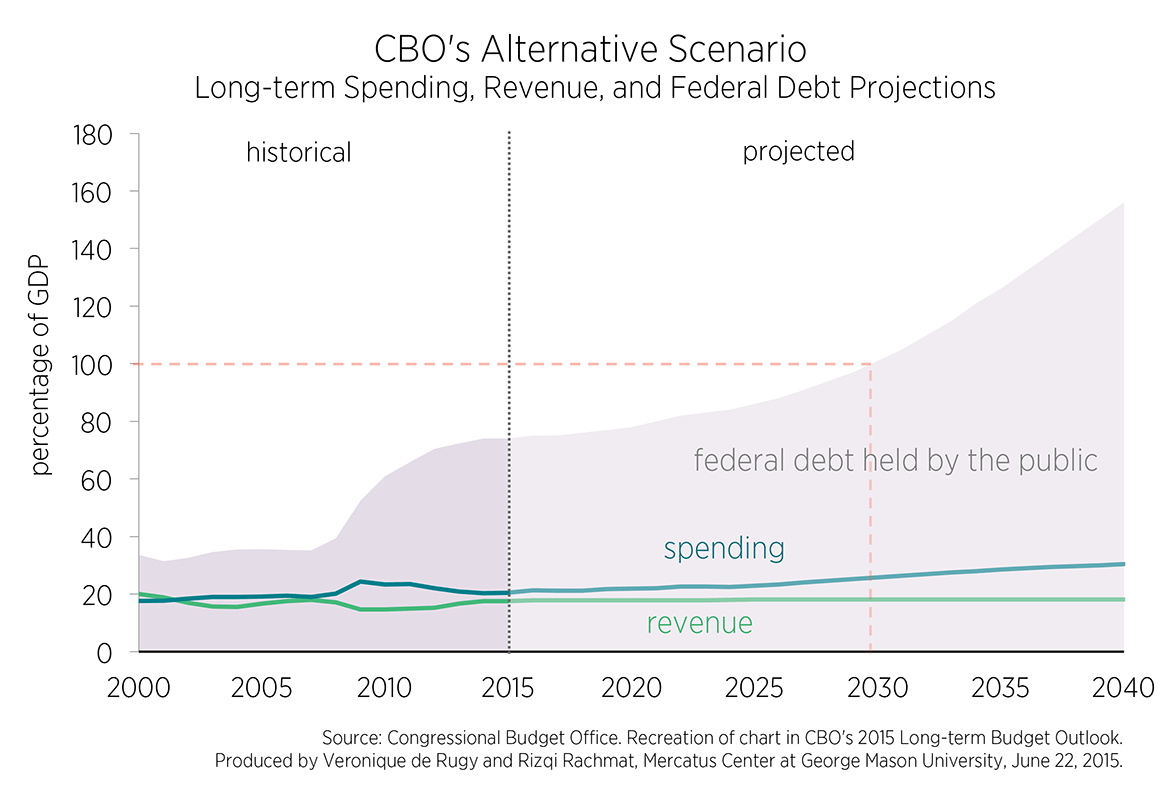- | Government Spending Government Spending
- | Data Visualizations Data Visualizations
- |
Long-Term Budget Forecast Should Prompt Action Now
The Congressional Budget Office (CBO) recently released its annual report on the federal government’s long-term budget outlook, which unsurprisingly remains bleak. Policymakers have known for years that the federal government’s long-term fiscal situation is unsustainable. Unfortunately, they have taken little action to address the situation. The longer Washington waits to get its financial house in order, the more difficult it will be to rectify the situation.
The Congressional Budget Office (CBO) recently released its annual report on the federal government’s long-term budget outlook, which unsurprisingly remains bleak. Policymakers have known for years that the federal government’s long-term fiscal situation is unsustainable. Unfortunately, they have taken little action to address the situation. The longer Washington waits to get its financial house in order, the more difficult it will be to rectify the situation.
The first chart below shows projected federal spending, revenues, and debt held by public as a share of GDP under the CBO’s extended baseline, which assumes that current laws will remain unchanged.
Revenues as a share of the economy would rise from 17.7 percent this fiscal year to 19.4 percent in fiscal year (FY) 2040. The CBO notes that the current 50-year average for federal tax revenue is 17.4 percent of GDP, substantially less than projected. The bigger problem is that spending as a share of the US economy is predicted to jump from 20.5 percent this fiscal year to 25.3 percent in FY 2040. The widening imbalance between revenues and spending would drive the federal debt held by the public from an already worrisome 74 percent of GDP today to 103 percent in FY 2040.
The CBO notes that federal debt levels have only reached this height once and that was at the end of World War II. Since then, entitlement programs, such as Social Security, Medicare, and Medicaid, have ballooned and now dominate the federal budget. Indeed, it is the continued growth of these programs that drive the spending increases being predicted and the consequent dangerous levels of debt accumulation.
The extended baseline scenario is disconcerting, but the CBO’s arguably more likely “alternative scenario,” displayed in the second chart below, would be even worse. Under the alternative scenario, the CBO assumes that policymakers will continue extending various tax breaks; that sequestration spending limitations will disappear; and that spending will rise at even higher historic levels while revenue collection is dampened.
In FY 2040, revenues would be 18.1 percent. That’s lower than the extended baseline figure but still above the 50-year average. On the other hand, spending would account for a massive 30.4 percent of GDP in FY 2040—about one-fifth higher than the already-high 25.3 percent figure under the extended baseline scenario. The result is that federal debt held by the public as a share of US economy would reach a colossal 156 percent. And that figure doesn’t account for damage to the economy caused by such extreme levels of debt. When those negative economic effects are factored in, the CBO estimates that publicly held debt as a share of GDP would reach 175 percent.
Needless to say, neither scenario is sustainable. Policymakers should stop putting off the tough decisions that need to be made today. In fact, these decisions should have been made years ago. Unfortunately, policymakers tend to make decisions based on the election cycle and, therefore, focus on present or short-term concerns. That dynamic will have to change if the United States is to avoid fiscal disaster.



